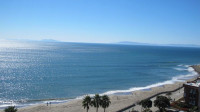
Taking Action Against Aquatic Invasive Species
Welcome to the Aquatic Invasive Species Eradication and Control website. This site is intended to assist lake managers and collaborating groups in preparing and implementing eradication and control tactics for aquatic invasive species.
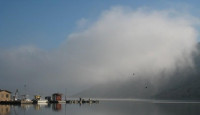
While much of the information is focused upon quagga and zebra mussels, it also is broadly applicable to many types of aquatic pests including fresh water, brackish water and salt water species. The invasive fresh water mussels serve as a model to illustrate the general concepts and specific steps required for taking action against aquatic invasive species.
Available Educational Materials
Two complementary sets of educational materials are now available for your use:
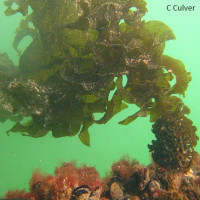
- Early Detection Monitoring Manual for Quagga and Zebra Mussels, CASGEP and UC Cooperative Extension: Carolynn S. Culver, Ph.D., Sabrina L. Drill, Ph.D., Monique R. Myers, D.Env, Valerie T. Borel. Publication No. T-069
- Eradication & Control Information Sheets. Sheets that provide detailed information on aspects of implementing various eradication and control tactics including equipment and staffing needs; permit requirements; and other issues to consider when determining the feasibility of certain tactics for eradicating or controlling aquatic invasive species.
These educational materials were produced through a collaborative effort. We hope the materials will be useful for reducing the spread and impacts of aquatic invasive species.
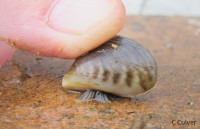
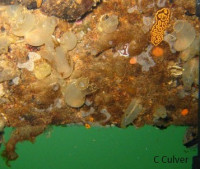
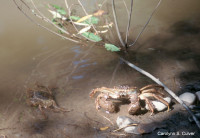
Healthy Ecosystems & Boating
Working in collaboration with UC Cooperative Extension Coastal Resources Advisor Leigh Johnson, SGEP Advisor Carrie Culver is also addressing a primary vector responsible for spreading marine invasive species – boating activity. There is great concern about the spread of invasive species by this vector from harbors to sensitive California island habitats and kelp and rocky reef ecosystems. Culver and Johnson have combined their expertise and information on balancing water quality and invasive species issues when managing hull fouling. A statewide series of workshops arranged in collaboration with several state and federal agencies have been presented to many boating and harbor organizations and the general public. Culver and Johnson also have joined forces with UC researchers Henry Page and Jenifer Dugan to conduct research that will help inform best management practices for hull cleaning and bottom paints/coatings, and raise awareness about the transport of aquatic invasive species via boat hulls.
IPM for Boats: Integrated Pest Management for Hull Fouling in Southern California Coastal Marinas. 2012. C.S. Culver, L.T. Johnson and M.D. Lande
Quagga/Zebra Mussel Monitoring
Early Detection Monitoring Manual for Quagga and Zebra Mussels, CASGEP and UC Cooperative Extension: Carolynn S. Culver, Ph.D., Sabrina L. Drill, Ph.D., Monique R. Myers, D.Env, Valerie T. Borel. Publication No. T-069
Quagga (Dreissena bugensis) and zebra (D. polymorpha) mussels have caused numerous economic and ecological impacts where they have been introduced. This manual was developed to help direct early detection monitoring efforts for small lakes, reservoirs and streams in California that are believed to be free of invasive quagga and zebra mussels. The methods presented are intended for citizen volunteer groups involved with or interested in monitoring aquatic organisms. Citizen help with identifing the extent of the spread of these invasive species through early detection monitoring is vital for minimizing the occurrence of additional infestations and for the application of effective treatment methods. While the manual addresses the situation in California, the majority of the information is broadly applicable to other states and countries. It is hoped that it will facilitate proactive measures to minimize the impacts of these and other aquatic invasive species in California and elsewhere.
This publication is available here.
Quagga/Zebra Mussel Monitoring: These internationally recognized pests have caused significant impacts on water delivery systems, fisheries and ecosystems, with control costing millions of dollars annually in many states and countries. Relatively recent invaders to California, many are working toward minimizing their impacts and spread. To assist the Department of Fish and Wildlife, Culver and her colleagues also have developed an associated pilot training program on this topic. Culver conducts research to better understand recruitment dynamics and early detection monitoring to aid management of these pests.
Preparing for a Rapid or Opportunistic Response to Aquatic Invasive Species: Guide for California Water Managers
Quagga and zebra mussels are invasive species in the US that have caused over $3 billion in economic damage. The small freshwater mussels, typically half an inch to two inches in size, grow on hard substrates and can clog pipes and negatively impact ecosystems and fisheries. First introduced to North America in the 1980s, they were spotted in California in 2007 and since then have been found in more than 40 locations in the state, almost exclusively in Southern California.
To successfully respond to the establishment of an aquatic invasive species such as quagga or zebra mussels, water managers must be ready to take quick action. Here we outline steps you can take now that will enhance your chances for effectively containing, controlling, or eradicating the pest. We specifically address freshwater quagga mussel infestations, but the information can be applied more broadly to other aquatic invasive species.
It’s important to note that taking some actions may be worse than doing nothing. Without a comprehensive plan, you may unwittingly spread or enhance the infestation. This page provides actions you can take now to improve your response to aquatic invasive species. You can also download our checklist (PDF) and see our Quagga and Zebra Mussel Eradication and Control Tactics report for more detailed information.
Existing infestations
While this information is targeted toward managers of water bodies that are not yet infested with quagga or zebra mussels, the guide and checklist also apply to those who are already managing invasive mussels. When mussel infestation levels decrease—due to “boom and bust” cycles or changing environmental conditions that greatly reduce the population size and/or inhibit reproduction (for example after lots of rain and runoff)—the infestation can typically be treated as if it were newly detected; low number of mussels in specific locations. By responding quickly at an opportune time, you will likely be able to further reduce and potentially eradicate an infestation.
Responding to invasive species:
What can you do now that will help you manage a future or existing infestation? A rapid or opportunistic response requires:
- Detecting the pest
- Knowing your waterbody
- Assessing the infestation
- Addressing the infestation
Detecting the pest
Training: Obtain training in identification of aquatic invasive species. Visit places where invasive species are already present but still in low numbers. Ask resource agencies, Sea Grant extension personnel, or others with pertinent knowledge for assistance with arranging a training.
Early Detection Monitoring: It is critical to conduct early detection monitoring. If time or personnel are limited, concentrate monitoring when you are most likely to find the pest (typically late spring through early fall for quagga mussels in California). Also, take advantage of routine maintenance by examining anything that is taken out of the waterbody, such as floating restrooms and docks in the winter.
More information:
- California Sea Grant Early Detection Monitoring Manual for Quagga and Zebra Mussels (PDF)
- Quagga/Zebra Mussel Surface Survey Protocol - California Department of Fish and Wildlife
- Quagga/Zebra Mussel Artificial Substrate Monitoring Protocol - California Department of Fish and Wildlife
- California Department of Fish and Wildlife Quagga/Zebra Mussel Plankton Tow Sampling Protocol
Pest Identification: Determining whether you need to respond to an infestation requires knowing that the pest you found is indeed an invasive species. Develop a protocol for photographing, collecting, and sending samples for confirmation of pest identification. Have monitoring procedures in place and train staff in early detection protocols.
Knowing Your Waterbody
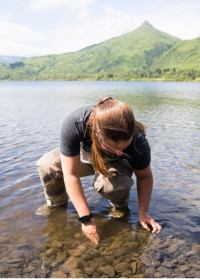
Structure and Habitats: Responding to invasive species requires knowing where the pest will likely occur. Quagga and zebra mussels tend to grow on hard materials such as infrastructure (docks, pipes, anchors), rock habitat, and other materials—anything from sunken bottles and boats to Asian clam shells. Map the available hard surfaces known in your water body. Take advantage of times when water levels are low and use a bottom profiler to identify submerged rocks and other hard surfaces.
Environmental Conditions: All living things, including invasive species, require certain environmental conditions to thrive. Water temperature, dissolved oxygen, calcium, and pH are important parameters for many species. Measuring these parameters at multiple locations and water depths throughout the year will provide insight into locations within the waterbody that are suitable for a given invasive species. Reach out to resource agencies and universities for assistance. They likely will have the necessary equipment and this makes a great student project.
Other Species: The feasibility of using some eradication and control tactics will depend on what other species occur in the waterbody or waterways connected to it. For example, chemical and physical applications (such as tarps and benthic mats) may not be feasible if threatened or endangered species are present. However, potentially useful species such as bluegill may aid in the application of targeted biological control. Work with resource agencies and/or universities to identify what species exist in your waterbody.
Assessing the infestation
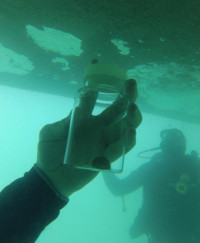
Dive Services: Work out a contract to have skilled SCUBA divers that are trained in identification of the invasive species on call, so that they are available to access the waterbody and conduct an assessment as soon as an infestation is detected. Make sure collection permits are in place if divers are going to obtain samples. Conduct annual dive surveys to test response system.
Addressing the infestation
Evaluate Options: Activities to control the infestation may include quarantining the infested area, and a variety of eradication and control options. Make a list of the options and note their feasibility given your system and cost-benefit considerations. Engage others knowledgeable about invasive species in your review. Implement a plan for using those that are feasible, modifying your response as needed to better achieve your management goals.
Develop a Response Strategy: A useful planning framework is the Integrated Pest Management (IPM) approach. This approach minimizes economic, human health, and environmental risks by using multiple tactics that target multiple mussel stages, prioritizing use of more benign methods when possible and appropriate, with continual evaluation and subsequent modifications if needed.
Equipment and Permits: Identify what equipment and permits are needed for implementing feasible options. Determine who will provide the equipment. If you will, consider working with other regional water bodies to obtain and share equipment. Also work with permitting agencies to have permits ready.
More information
 Carolynn Culver
Carolynn Culver